Best Lenses for Underwater Photography

Quick Links
Compact Camera Wet Lenses | Olympus Lenses | Best Nikon Lenses | Best Canon Lenses
Nikon Lens Chart | Canon Lens Chart | Tutorial on Lens Basics | Intro to Fisheye Lenses
What are the best lenses for underwater use? What are the best macro lenses and wide-angle lenses? Just because a lens is a good choice topside doesn't mean it is the best choice underwater. Let's take a closer look at the recommended options for underwater lenses.
In this guide to the best underwater lenses, we will look at the best choices for dslr cameras such as the Canon 5d MKIV, Canon 7d MKII, Nikon D850, Nikon D7000, Olympus E3, Olympus e620 and other dSLR models.

Lenses can be a very personal choice. It largely depends on what you enjoy taking photos of.
You will probably want to start out buying one wide-angle lens and one macro lens. Please see my lens recommendations below. If you are looking to move into a dSLR system, don't skimp on the lens. Start off with a good macro or wide-angle lens and at least one good strobe. Skimp on the body and/or housing if you need to save money.

**For an explanation of terms such as fisheye, focal length, zoom, prime, macro, and wide-angle read the Lens basics and camera basics page.
Fisheye Lens vs. Rectilinear Lens
A "fisheye" else is a special kind of ultra-wide lens that gives a curved perspective.
Fisheye lenses let you get closer to your subjects, which is important underwater for color and image sharpness.

A fisheye lens is needed to get close to large animals like this Manta ray in Bali, surrounded by Snell's window.
Most wide-angle lenses are considered "rectilinear" lenses. The Sigma 8mm, 10mm, 15mm, Olympus 8mm, Tokina 10-17mm, Nikon 10.5mm, Nikon 16mm and the Canon 15mm are all "fisheye" lenses, that are extra-wide lenses with up to a 180 degree of view. Straight lines in the outer areas of the images will appear curved. It is important to note the 17mm on a fisheye lens is not equivalent to 17mm on a rectilinear lens. See the field of view columns in the lens chart below. For example, the Tokina 10-17mm at 17mm is about as wide as the Nikon 12-24mm lens at 12mm.
Fisheye lenses usually work better behind dome ports underwater than other wide-angle lenses.
Remember that "fisheye" is a property of a lens, not a port. Some dome ports are called "fisheye" dome ports, but that is just a marketing term, meaning they think that dome port works well with a fisheye lens.
Read more here about choosing a fisheye lens versus a regular wide-angle lens for underwater use.


Getting Sharp Corners on Wide-Angle Lenses
Many photographers have been frustrated trying to get sharp corners on wide-angle rectilinear lenses underwater, especially in the 10-20mm focal length range. Many professionals end up testing combinations of diopters, ports, and port extensions to find out what works best. Many people simply switch to fisheye lenses. Visit the dome port optics section for more details. I suggest you consult your housing manufacturer or UW photo shop for their most recent recommendations.
Nikon Lens Recommendations
Tokina 10-17mm Fisheye Lens
Best lens choice for wide-angle. It's sharp, focuses very close. It covers range of Nikon 10.5mm + Nikon 16mm fisheye lenses; Made for cropped sensor dSLRs only. Read my Tokina 10-17mm fisheye lens review
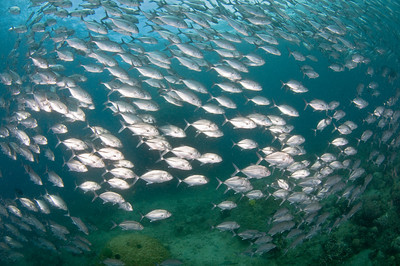
Nikon 10.5mm Fisheye Lens
-
A great choice for WA, not as flexible as tokina 10-17mm, but primes generally have slightly better IQ (image quality).; Made for cropped sensor only, although the lens will work with a full-frame camera. Can be used with a 1.4x teleconverter for close-focus shots that are not so wide, the same as using the tokina 10-17mm at 15mm.
Sigma 8-16mm
New rectilinear wide-angle lens, good choice if you want a single lens for topside and underwater. See my sigma 8-16mm review
Nikon 10-24mm,12-24mm, Tokina 11-16mm, Tokina 12-24mm, Sigma 10-20mm
All are good choices for a rectilinear wide-angle underwater lens. Read the Nikon 10-24mm lens review. A diopter is needed for these lenses, see the dome port optics section to understand why; mainly used for shooting wrecks, sharks, shy pelagics, and subjects such as models where fisheye distortion is not desired.
The Nikon 10-24mm and Sigma 10-20mm are the best suited for underwater photography because of their close-focus distance, the Nikon lens is the best choice.
All 4 lenses have different ranges, prices, and IQ. For cropped sensor cameras only. See this link for top-side reviews http://www.kenrockwell.com/tech/digital-wide-zooms/comparison.htm
The Sigma 8-16mm is the newest and widest non-fisheye choice, and has a good close-focus distance of 24cm
The Nikon 10-24mm was announced on April 14th 2009. It could be a great choice for a wide-angle rectilinear zoom. It focuses at 9.6 inches, closer than the nikon 12-24mm, which focuses at 12 inches. It takes a 77mm filter. Retails at $900. Feedback from underwater photographers has been good.
The Tokina 11-16mm will not have enough of a zoom range for sharks/pelagics, but it could be an excellent choice for wrecks, if that is your focus. This lens would probably be my last choice though; I've heard of a couple underwater photographers not happy with this lens. It actually works well for video though.
The Sigma 10-20mm has a very good reputation for underwater use, due to it's minimum close focusing distance of 24cm. Great choice for Wrecks, Sharks and Wide-angle shots with straight lines, models, etc. This lens is a personal favorite of mine for topside wide-angle photography and is an excellent value for the price, and it is very sharp.
Nikon 14-24mm
The corner sharpness of this lens has been not very good, because it can't take a diopter. It needs a very large dome port.
Nikon 16-35mm f/4 VR
One of the best choices for a full-frame camera, great for sharks, pelagics, pool photography
Nikon 16mm Fisheye Lens
Good choice for WA reef shots, but not as flexible as Tokina 10-17mm, and it doesn't focus very close; excellent image quality. Sigma 15mm focuses closer, has the same angle of view and is much less expensive.
Sigma 15mm Fisheye Lens
Great choice for full-frame shooters. Focuses nice and close. But the Tokina 10-17mm is also a good choice. Read our Sigma 15mm vs Tokina 10-17mm on a full frame article.
Nikon 17-35mm or 17-55mm
Good choice for sharks and other pelagics, but both are expensive; a diopter will be needed. Nikon 17-5mm is cropped sensor only. use with a dome port
Sigma 17-70mm
A good choice for a mid-range lens, focuses close. This is the preferred choice out there for a mid-range lens. For cropped-sensor cameras only. Use with a dome port.
"Kit lenses" - Nikon 18-55mm, 18-70mm
Generally not the best lenses for UW use, because it doesn't focus very close - but will work better with a +2 diopter. I've used the 18-55mm, read the 18-55mm review, and it took pretty good decent fish and reef photos, not bad for a lens I paid $70 for.
Nikon 18-135mm, 18-200mm
Much too long a zoom range for a port, very poor choice for underwater use.
Nikon 50mm f/1.4, 50mm f/1.8
Great lenses topside, but very poor choices for underwater, close focus distance is 1.5ft for these lenses, that is very far away. You have been warned :)
Nikon 60mm Macro Lens
Excellent choice for macro, does 1:1 magnification. Click for a complete comparison between the 60mm and 105mm lens, and also a comparison between the "old" Nikon 60mm lens and the new Nikon AF-S 60mm lens. The "old" version also works great with a 1.4x teleconverter.
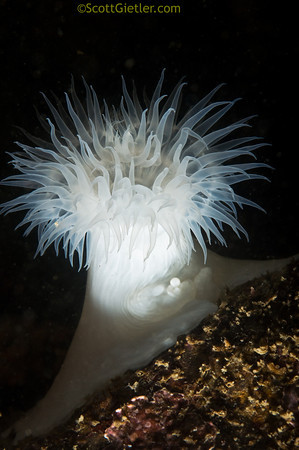
Nikon 85mm f/3.5 VR
This lens came out Dec 2009. This will be a popular 3rd option for macro lenses. However, this lens is DX only. Still, I think the 60mm and 105mm are the top 2 choices.
Tamron 90mm
This lens is supposed to be quite sharp, and it does 1:1 magnification, and it's an FX lens. Use it in the port made for the new Nikon 105mm lens. This lens might be a good choice for a longer macro lens if you don't want to pay for the Nikon 105mm.
Nikon 105mm Macro
Excellent choice for macro, does 1:1, good for skittish subjects; longer working distance than the 60mm; sometimes hard to focus in low-light or low-vis. Works great underwater with a diopter.
There are two versions, the old version and the newer VR version. Click here for a comparison. I've also put up a review on the nikon 105mm lens.
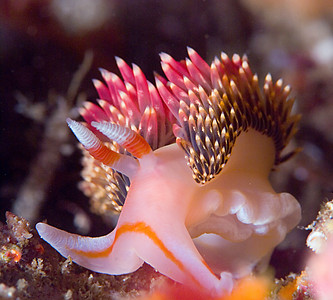
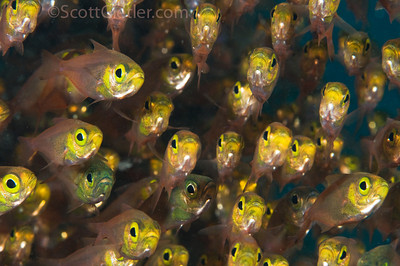
Nikon 70-180mm
This lens does not do 1:1 macro, but will come closer with a diopter. Magnification is 1:1.33 at 180mm, and 1:3 at 70mm. I've seen great results from this lens, especially fish portraits and skittish critters. Users enjoy the flexibility of the zoom. Please note, this lens is no longer being made, and is hard to find, and hard to find a port & zoom ring for.
Nikon Underwater Lens Chart
Lens | Diagonal Field of view on D300 | Aperture | Max magnification & min. focus distance (from back of the lens) | |
Nikon 10.5mm fisheye | 180 | F2.8 | 1:5, 14cm | |
Nikon 16mm fisheye | 120 | F2.8 | 1:10, 25cm | |
Tokina 10-17mm fisheye | 180-100 | F3.5-F4.5 | 1:2.5, 14cm | |
| Nikon 10-24mm | 109-61 | F3.5-F4.5 | 1:5, 24cm | |
Sigma 10-20mm | 109-70 | F4-F5.6 | 1:6.7, 24cm | |
Nikon 12-24mm | 99-61 | F4 | 1:8, 30cm | |
Tokina 12-24mm | 99-61 | F4 | 1:8, 30cm | |
Tokina 11-16mm | 104-82 | F2.8 | 1:11.6, 30cm | |
Nikon 17-35mm | 79-43 | F2.8 | 1:4.6, 28cm | |
Nikon 17-55mm | 79-29 | F2.8 | 1:5, 36cm | |
Sigma 17-70mm | 80-23 | F2.8-F4.5 | 1:2.3, 20cm | |
Tokina 35mm | 43 | F2.8 | 1:1, 14cm | |
Nikon 60mm (old version) | F2.8 | 1:1, 22cm | ||
Nikon 60mm AF-S (new version) | F2.8 | 1:1, 18.5cm | ||
Nikon 85mm Macro (DX Lens) | F3.5 | 1:1, 27cm | ||
Tamron 90mm Macro | F2.8 | 1:1, 29cm | ||
Nikon 105mm VR | F2.8 | 1:1, 31cm | ||
Nikon 70-180mm | F4.5-F5.6 | variable, 37cm |

Canon Lens Recommendations
Canon 8-15mm Circular Fisheye
Great lens, excellent choice, a must have for full-frame shooters. Very sharp, expensive. Works great underwater with the right dome. Read out Canon 8-15mm fisheye lens review
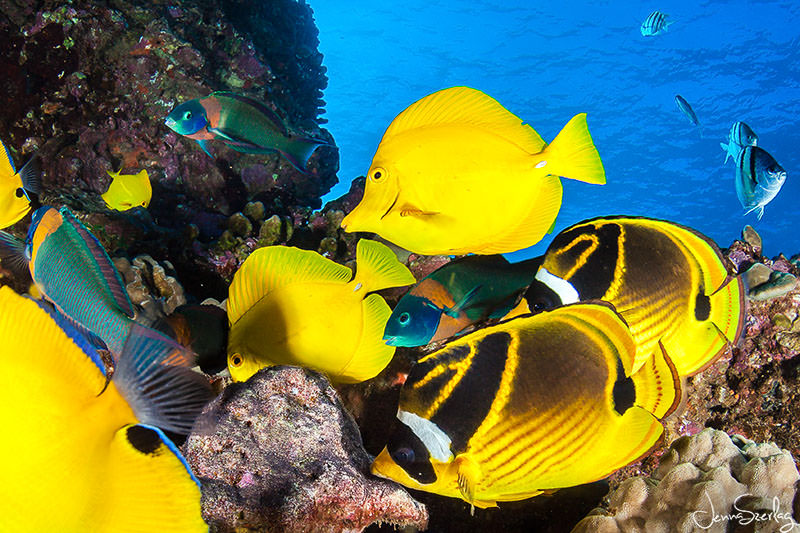
Canon 11-24mm f/4
Excellent full-frame choice for an ultra-wide rectilinear lens
Canon 10-22mm, Sigma 10-20mm
Wide rectilinear lens, used for wrecks, and often used by people who already have one for topside. Cropped sensor only. The new Sigma 8-16mm lens is also a choice.
Tokina 10-17mm Fisheye
The best wide-angle choice, cropped sensor cameras can use the full zoom. It also works great on full-frame cameras from 15mm to 17mm.
Sigma 8-16mm
New rectilinear wide-angle lens, good choice if you want a single lens for topside and underwater. See my sigma 8-16mm review
Sigma 15mm Fisheye
People are quite happy with this lens, great IQ, focuses closer than the Canon 15mm - which is important in underwater optics. Top choice for full-frame shooters
Canon 15mm Fisheye
This lens costs more than the Sigma 15mm fisheye, but most people don’t seem to see better results. The Sigma 15mm focuses closer.
Inon UFL-MR130 Macro-Fisheye Lens
This lens is a new innovative semi-fisheye wet lens that works only with the Canon 60mm EF-S lens. It captures a macro-view in the center, and a wide-angle view on the edges. An Inon housing must be used. More information on the Inon UFL-MR130 is found here.
Canon 16-35mm f/2.8 Lens II
Excellent quality lens, although due to the price most people seem to go for the 17-40mm. This lens has 2 versions - the "old" version 16-35mm I and the "new" version, 16-35mm II. The new version is very wide, check to make sure it will fit in your port, as far as I know it will not fit in Ikelite port. The newer version is supposed to be much better than the old version. This lens is popular with full-frame shooters for sharks, tight shots of schools of fish, etc.
Canon 16-35mm f/4
Surprisingly good image quality underwater, a great choice if you don't want to pay more for the F2.8 version of this lens
Canon 17-40mm f/4
Good mid-range choice. If you are undecided between the 16-35mm and the 17-40mm lens, you are not alone. Excellent image IQ behind a mid-range lens flat port.
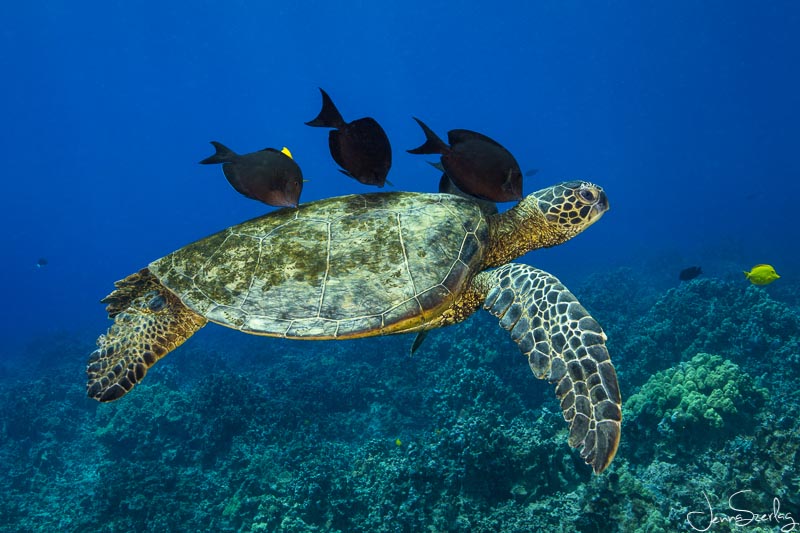
Tamron 17-50mm
Potential mid-range choice if you wanted one for top-side use indoors or for portraits. Otherwise the sigma 17-70mm will give you twice the magnification on the macro end. Cropped-sensor only.
Sigma 17-70mm
Good mid-range choice, cropped sensor only. Use with a dome port.
Canon 24mmL f/1.4
Excellent lens, commonly used by pro’s, used for specific WA subjects (models, pelagics), especially on full-frame cameras.
Canon 24mm f/2.8
Good lens, good choice for a prime, but not as stellar as the Canon 24mm F1.4
Canon 24-70mm f/2.8 II
- Good mid-range choice for a full-frame camera
Canon EF-S 60mm Macro Lens
Great macro lens, but it doesn’t take a teleconverter, unless you use an extension tube in between the two. For cropped sensor cameras only.
Canon 100mm f/2.8 Macro IS USM
Great macro lens, highly recommended for cropped sensor and full-frame shooters. There are several different versions of this lens, at different price points, all have excellent optics
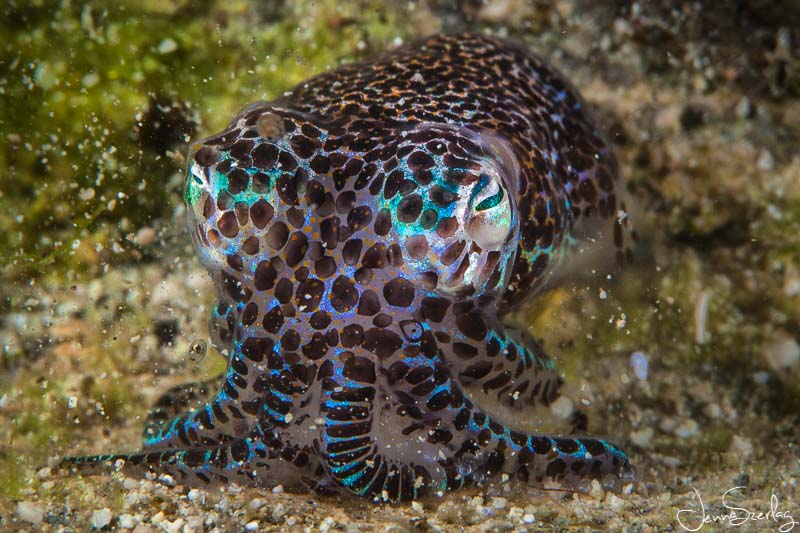
Sigma 100mm
Many people have switched to the Canon 100mm due to the slow auto-focusing of this lens
Sigma 150mm
Used by full-frame users for macro & shy subjects, working distance is quite far
Canon Underwater Lens Chart
Lens | Diagonal Field of view on Canon 50D | Aperture | Max magnification & min. focus distance | |
Sigma 15mm fisheye | 108 | F2.8 | 1:5, 15cm | |
| Canon 15mm fisheye | 108 | F2.8 | 1:7, 20cm | |
Tokina 10-17mm fisheye | 180-100 | F3.5-F4.5 | 1:2.5, 14cm | |
Sigma 10-20mm | 107-68 | F4-F5.6 | 1:6.7, 24cm | |
Canon 10-22mm | 107-63 | F3.5-F4.5 | 1:6, 24cm | |
Tokina 12-24mm | 97-59 | F4 | 1:8, 30cm | |
Tokina 11-16mm | 104-82 | F2.8 | 1:11.6, 30cm | |
Canon 17-40mm | 77-37 | F4 | 1:4.2, 28cm | |
Canon 16-35mm II | 80-42 | F2.8 | 1:4.5, 28cm | |
| Tamron 17-50mm | 78-31 | F2.8 | 1:4.5, 27cm | |
| Canon 18-55mm IS | 74-28 | F3.5-5.6 | 1:3, 25cm | |
Sigma 17-70mm | 77-11 | F2.8-F4.5 | 1:2.3, 20cm | |
Inon UFL-MR130 | 130 | wet lens | ?, 0cm | |
Canon 24mmL | 59 | F1.4 | 1:6, 25cm | |
Tokina 35mm Macro | 42 | F2.8 | 1:1, 14cm | |
Canon EF-S 60mm Macro | 25 | F2.8 | 1:1, 20cm | |
Canon 100mm Macro USM | 15 | F2.8 | 1:1, 31cm | |
| Sigma 105mm | 15 | F2.8 | 1:1,31cm | |
| Sigma 150mm | F2.8 | 1:1,38cm |
Best Recommended Starting Lens Kits
Nikon Cropped Sensor Lens Recommendations:
Tokina 10-17mm *** best choice for wide-angle***
Nikon 60mm *** best starter lens for fish, macro***
After buying those 2 lenses, consider:
Nikon 105mm VR (as a 2nd macro lens or for supermacro). Read a comparison between the 60mm and 105mm
Sigma 17-70mm (for marine life shots & pelagics, with the proper dome port support, extension, and zoom ring)
Nikon 10-24mm (for sharks, whales, tuna, other pelagics)
Nikon Full Frame Lens Recommendations:
Sigma 15mm fisheye
Tokina 10-17mm fisheye lens
Nikon 16-35mm F4 VR
Nikon 105mm
For very skittish subjects, you can also consider the Sigma 150mm macro, and for larger fish, the Nikon 60mm AF-S macro.
Olympus dSLR Lens Recommendations
Zuiko 8mm fisheye
Zuiko 7-14mm or zuiko 9-18mm. The 7-14mm is wider, and of higher quality, but costs double.
Zuiko 14-54mm – good mid-range lens
Zuiko 35mm macro. - good for larger fish and macro subjects. working distance is a little too close, but on the plus side, it does 1:1 macro (18mm across)
Zuiko 50mm. Best lens for macro. Also works well with a 1.4x teleconverter. Does 1:2 macro (36mm across).
Sigma 105mm – slow auto-focus, and a little too long with the 2.0 crop factor. Not highly recommended
Olympus Lens Example Photos
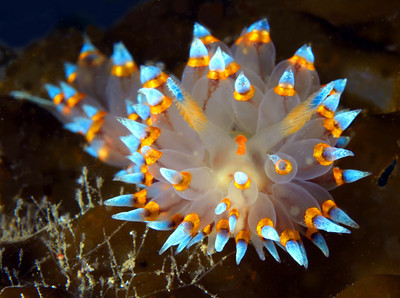
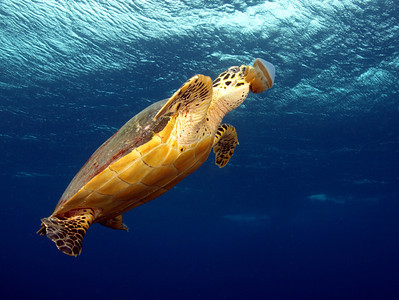
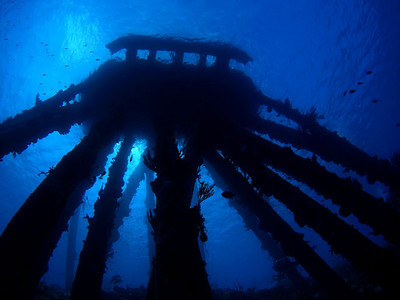
Canon Cropped Sensor Lens Recommendations:
Tokina 10-17mm *** best choice for wide-angle
Canon 10-22mm for sharks, pelagics
Sigma 17-70mm for a mid-range lens
Canon 60mm *** great first choice for fish, macro
Canon 100mm best choice for supermacro with a wet diopter
Canon Full Frame Lens Recommendations:
Sigma 15mm, Tokina 10-17mm fisheye lens or Canon 8-15mm fisheye
Canon 24mm prime (F1.4 or F2.8, depending on your budget)
Canon 11-24mm, 17-40mm, 16-35mm F4, or 16-35mm II zoom, depending on your budget
Canon 24-70mm F2.8 II for a mid-range lens
Canon 100mm f/2.8 Macro IS USM
Sigma 150mm (as a 2nd macro lens, for very shy subjects)
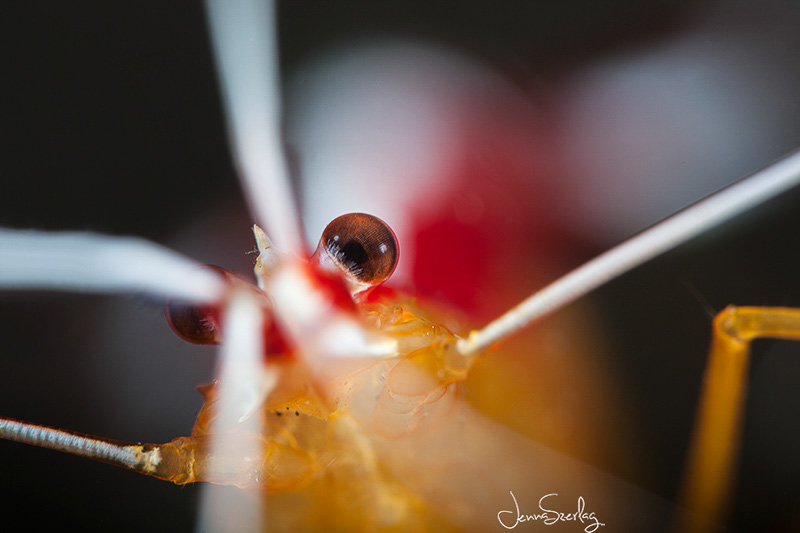
Compact Camera Wet Lenses
Please read Wet Lenses for Underwater Photography
Micro-Four Thirds Lenses
The Panasonic 8mm fisheye lens is a great option for close-focus wide-angle. Some people use the kit lens with a wet macro lens for everything else.The Panasonic 45mm macro lens is a sharp, but expensive macro lens. We also really like the new Olympus 60mm macro lens even better.You can read our complete guide to the best micro-four thirds lenses for underwater photography.
Further Recommended Reading
Underwater Camera selection guide
Full-frame: choosing the Sigma or Tokina fisheye
Guide to Nauticam Wet Wide Angle Lenses
RECOMMENDED ARTICLES
SUPPORT THE UNDERWATER PHOTOGRAPHY GUIDE:
The Best Service & Prices on u/w Photo Gear
 Visit Bluewater Photo & Video for all your underwater photography and video gear. Click, or call the team at (310) 633-5052 for expert advice!
Visit Bluewater Photo & Video for all your underwater photography and video gear. Click, or call the team at (310) 633-5052 for expert advice!
The Best Pricing, Service & Expert Advice to Book your Dive Trips
 Bluewater Travel is your full-service scuba travel agency. Let our expert advisers plan and book your next dive vacation. Run by divers, for divers.
Bluewater Travel is your full-service scuba travel agency. Let our expert advisers plan and book your next dive vacation. Run by divers, for divers.































